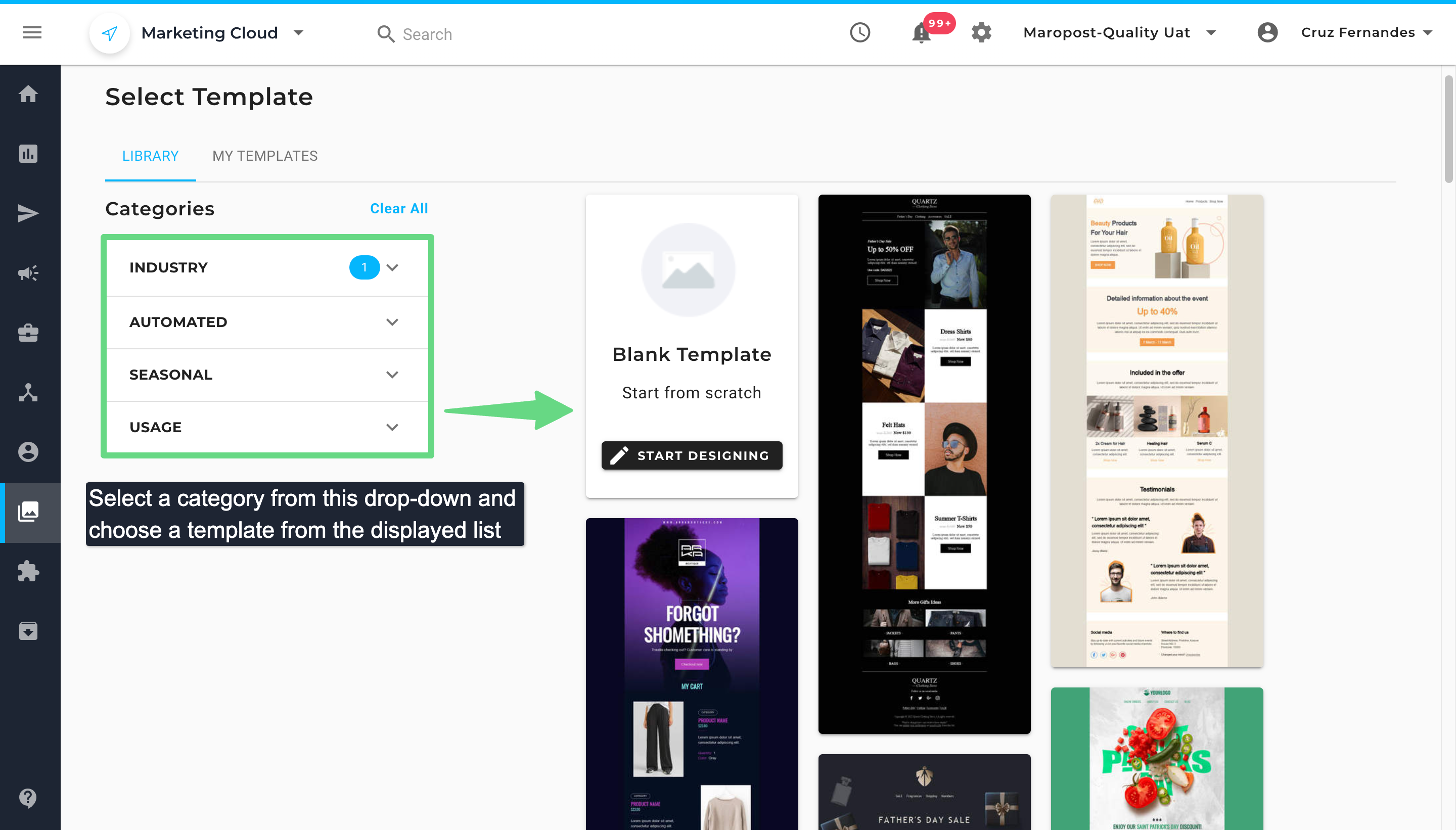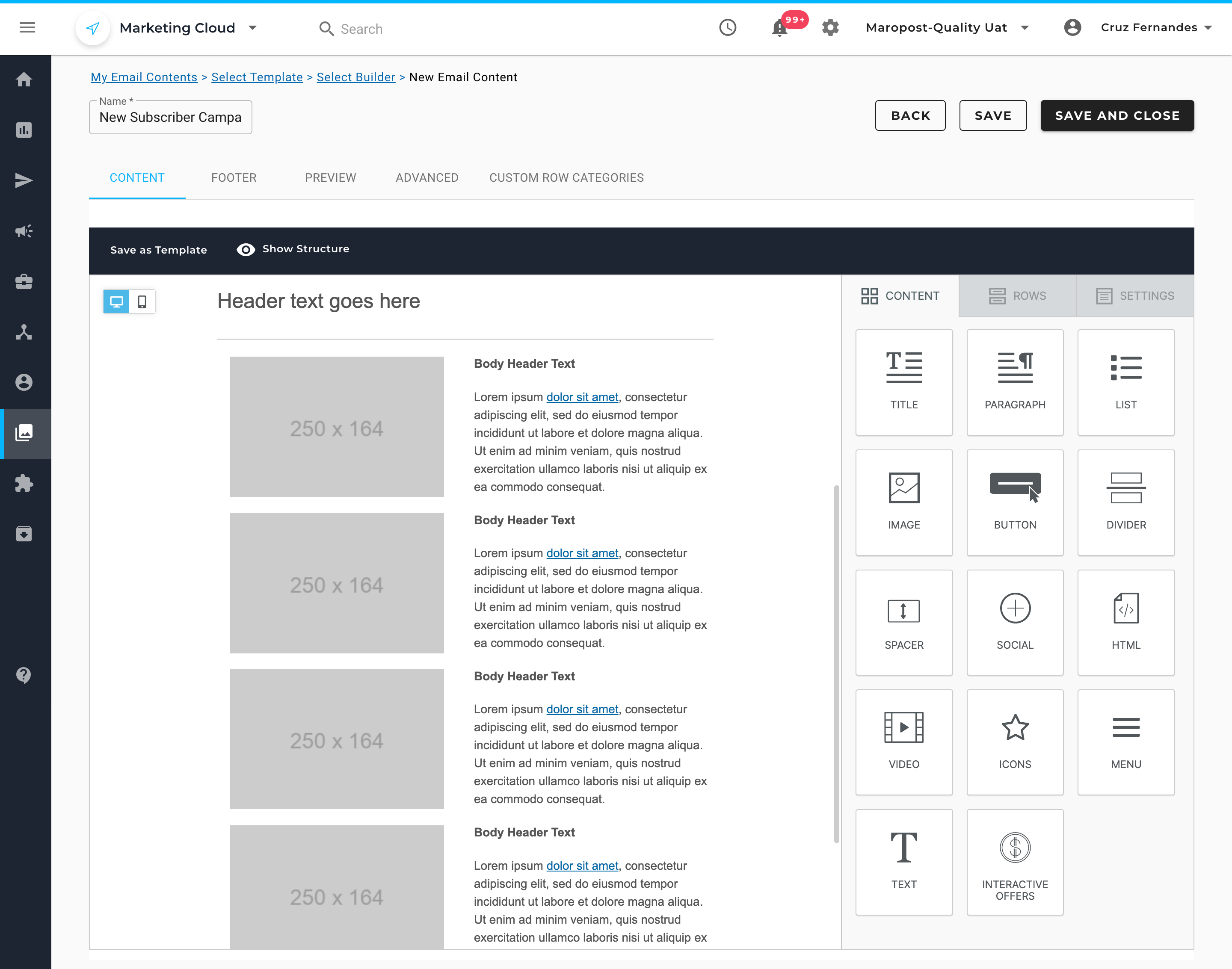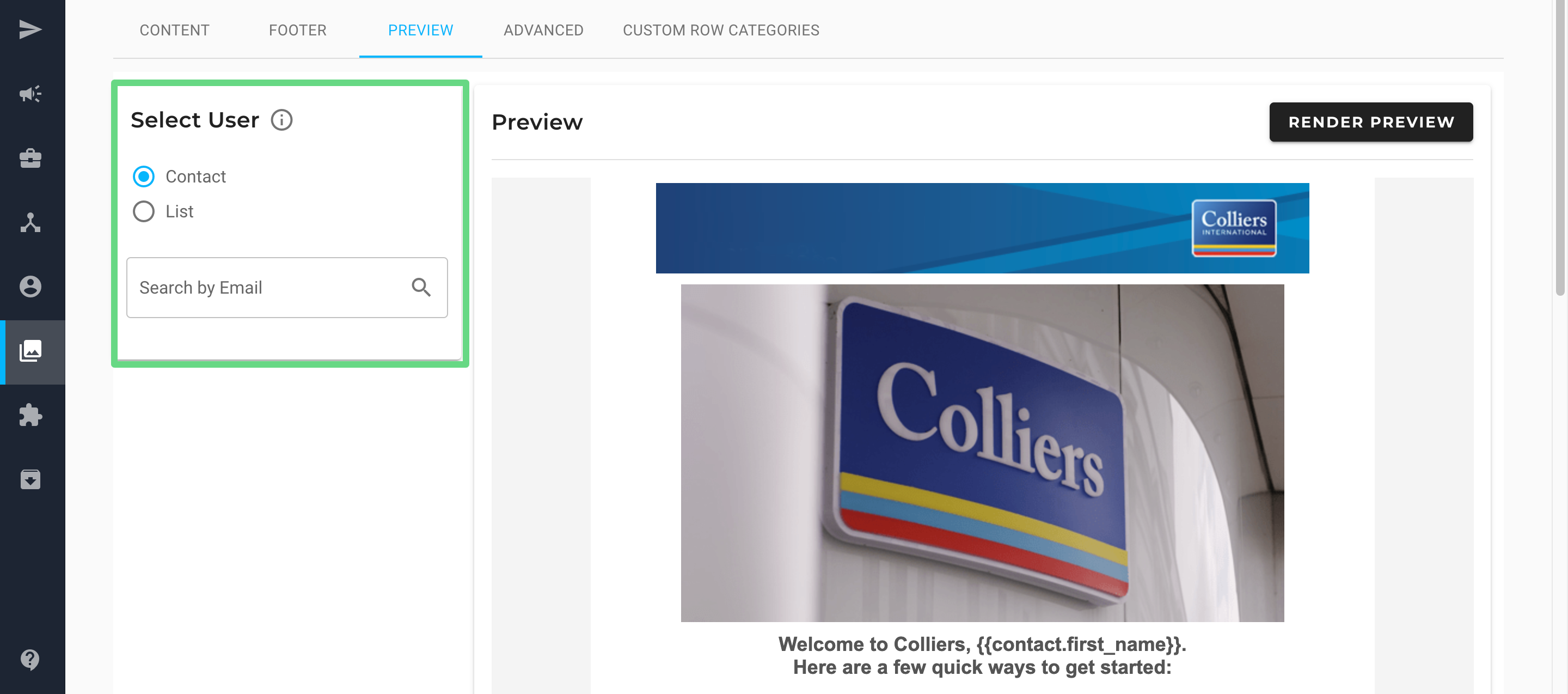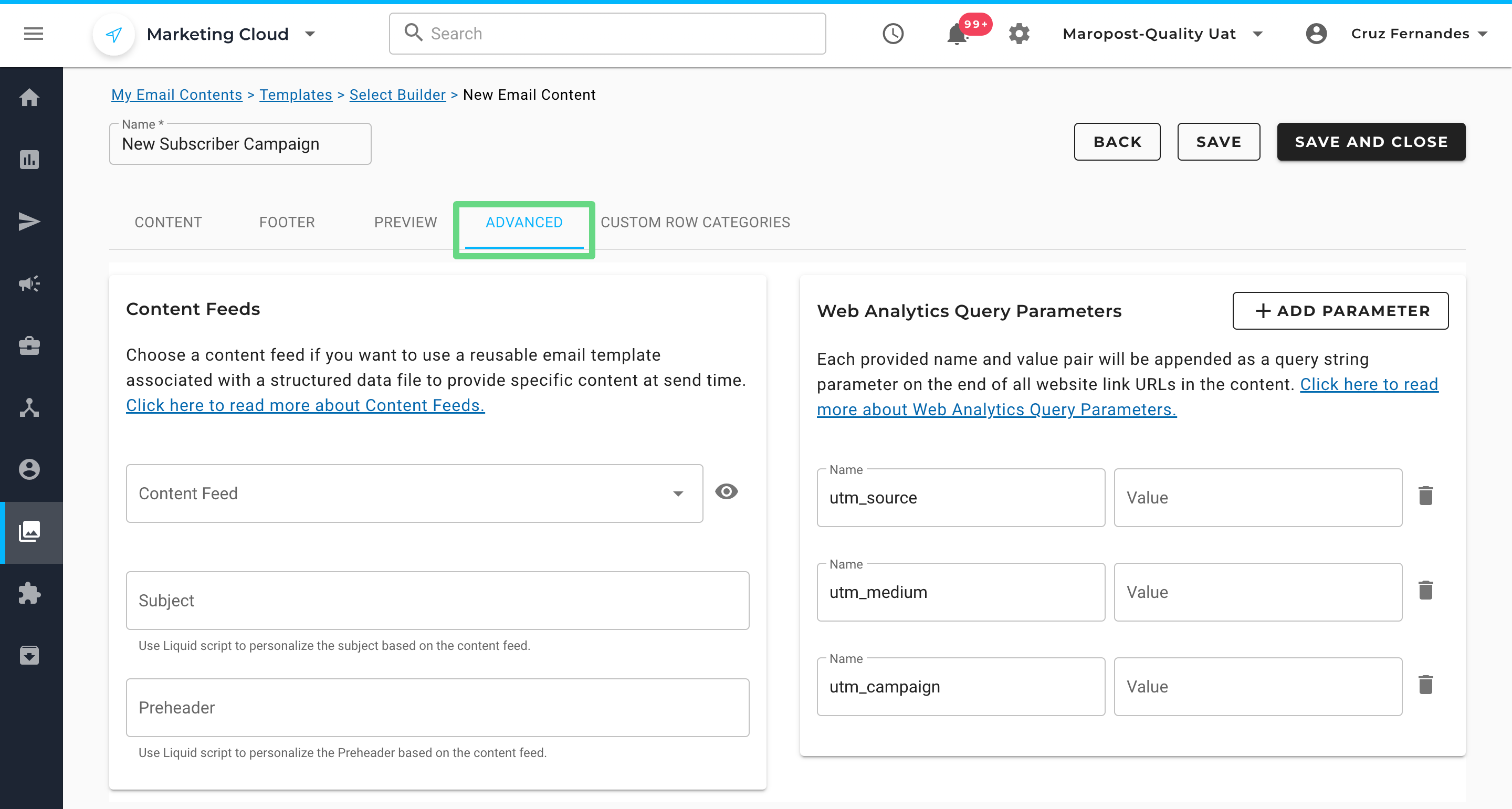You can create engaging email experiences using the drag-and-drop builder to design professional content without technical restrictions or coding requirements. This flexible design tool enables you to maintain brand consistency across campaigns while streamlining campaign production through reusable templates and content blocks. When properly utilized with compelling visual elements and optimized layouts, these types of email typically perform better than basic text emails by delivering more visually appealing and interactive subscriber experiences.
The drag-and-drop builder also helps improve operational efficiency by reducing the time needed to create professional email designs, allowing marketing teams to focus on strategy and messaging. At the same time, the intuitive interface handles the technical aspects of email layout and formatting.
The Drag and Drop content builder gives you the flexibility to design your content without any restrictions, as compared to a traditional content builder. It also provides the convenience of having all the formatting tools at your disposal, allowing you to control the design aspect of your email content in real time.
Thus, an easy-to-use interface, combined with great compatibility on several platforms, makes it an ideal tool for both experts and novice email content creators alike.
Some of its notable features are:
- Separation of structure and content: One of the most important traits of the drag-and-drop feature is its design characteristics, which are unique and independent of the content. This means every piece of content can have a different design layout and behavior than the rest of the email message.
- Flexible and compatible: The Drag and Drop builder features a range of tools to create a flexible content layout without compromising on compatibility. This means there is no adverse effect on the way the message is delivered and displayed across various client applications.
- Structured and distinguishable workspace: We have designed the feature to allow you to navigate through the editing canvas with ease. The formatting and properties panel is placed on the right-hand side, and the blank canvas is placed on the left-hand side. Simply select the formatting tools and drag and drop them into the blank workspace. You can make fine adjustments to the content’s appearance and function with the help of the properties panel that each formatting region possesses. This is true for all the structures (for example, a single-column row) and the individual content blocks (for example, a text content block).
- Highly customizable: Not only does the feature support various multimedia extensions, such as dynamic images, GIFs, URLs, etc., but you can also create highly interactive content by using custom HTML in your email messages.
- Supports reusability: Since the contents (e.g., rows, email content templates, footers) are created within separate blocks with their own design properties, they can be reused in multiple email campaigns, thereby reducing the workload of creating new content from scratch.
Creating Content using Drag and Drop Builder
Perform the following steps shown below to access the Drag and Drop builder tool and use it to create email content:
- Under the Navigation panel, go to Content and select the Email Content option.

- On the Email Content Index page, click New Content.

- In addition to creating your own personalized email content, you can also browse our extensive library of ready-to-use drag and drop templates, which include themes such as newsletters, business, events, e-commerce, and more. Themes also range from industry to seasonally related categories such as fashion, manufacturing, media & entertainment, spring, and festivities.

- To create content from scratch, click the Start Designing button.

- Choose the Drag and Drop template.

- Select a template layout from the list and click on Next.

- Enter a new title for your content draft in the Name field.

- The builder page will be divided into two sections. On the left is the editing canvas where you can see the layout of your email message. On the right are the formatting tools to help you design the email content. Depending on the template you selected in Step 5, the content blocks will be preloaded in the canvas region for you to work on.

- The elements present in this builder are explained below:
Editing Canvas: The editing canvas provides a blank space where you can drag and drop structural/content elements and edit them to create your desired content. To learn more about editing content, see Drag and Drop Builder: Editing Content.
Properties Panel: The properties panel is divided into three subsections, listing rows and content elements for you to select and use. It enables you to edit their properties and contains the general settings for the entire content.
Content: In this section, you can choose and edit the specific content elements that make up your message, for example, buttons, images, text blocks, and so on.
Rows: In this section, you can select different structural elements to organize your content, for example, a single-column versus a three-column row.
Settings: In this section, you can edit the overall settings that affect the entire message. For example, a default font family.
For more information about the properties panel and its sub-sections, see Drag and Drop Builder Properties Panel. - Once you have finished designing your email content, switch to the Footer section and either create a custom footer or choose a default one offered by Marketing Cloud. Ensure that you include all the necessary details in the email footer. For example, in compliance with anti-spam email laws, an email content should contain the address information of the email sender “{{campaign.address}}”, and an unsubscribe link to a particular campaign “{{campaign.unsubscribe_link}}”, “{{campaign.unsubscribe_url}}” or “{{campaign.one_click_unsub_url}}”. To learn more about creating custom footers, see Footer Management.

- To check how your email content will appear to your clients, visit the Preview section. Select a contact or a list to preview the email content as they would see it. Read our Previewing Content in Content Builders article to learn more.

- To ensure the ease of email deliverability to your clients, we have included an email scorecard in the preview section. With the help of such ratings, you can make adequate changes so that only necessary details are mentioned in the email or newsletter, thereby keeping the file size as small as possible. A smaller file size ensures minimal processing delay, allowing prompt delivery of email content to the intended recipient.

- Currently, Marketing Cloud displays three types of labels that denote the email score and size parameters. They are, namely:
Excellent: Email content size is less than 100 KB.
Good: Email content size is between 101 KB and 249 KB.
Poor: Email content size exceeds 250 KB.
Please note that these ratings don’t prevent you from sending email campaigns to your clients. However, for faster email delivery and a smoother user experience, we do recommend optimizing your email file size whenever possible. - You can also add web tracking parameters and content feed details for your content templates under the Advanced section. With web tracking, you can collect various parameters that help you understand how the audience interacts with your content. With Content Feed, you can reuse your email templates that display specific information to your users. To learn more about these features, read our Web Analytic Tracking and Content Feeds articles.

- Use the Custom Row Categories section to save and store customized row templates, allowing you to reuse them in email campaigns whenever needed. To learn more about customizing row categories, read our Drag and Drop Builder: Custom Row Categories article.

- To save the draft, click on Save and Close.

Related Articles
Content Design & Creation:
Form & Interactive Elements: